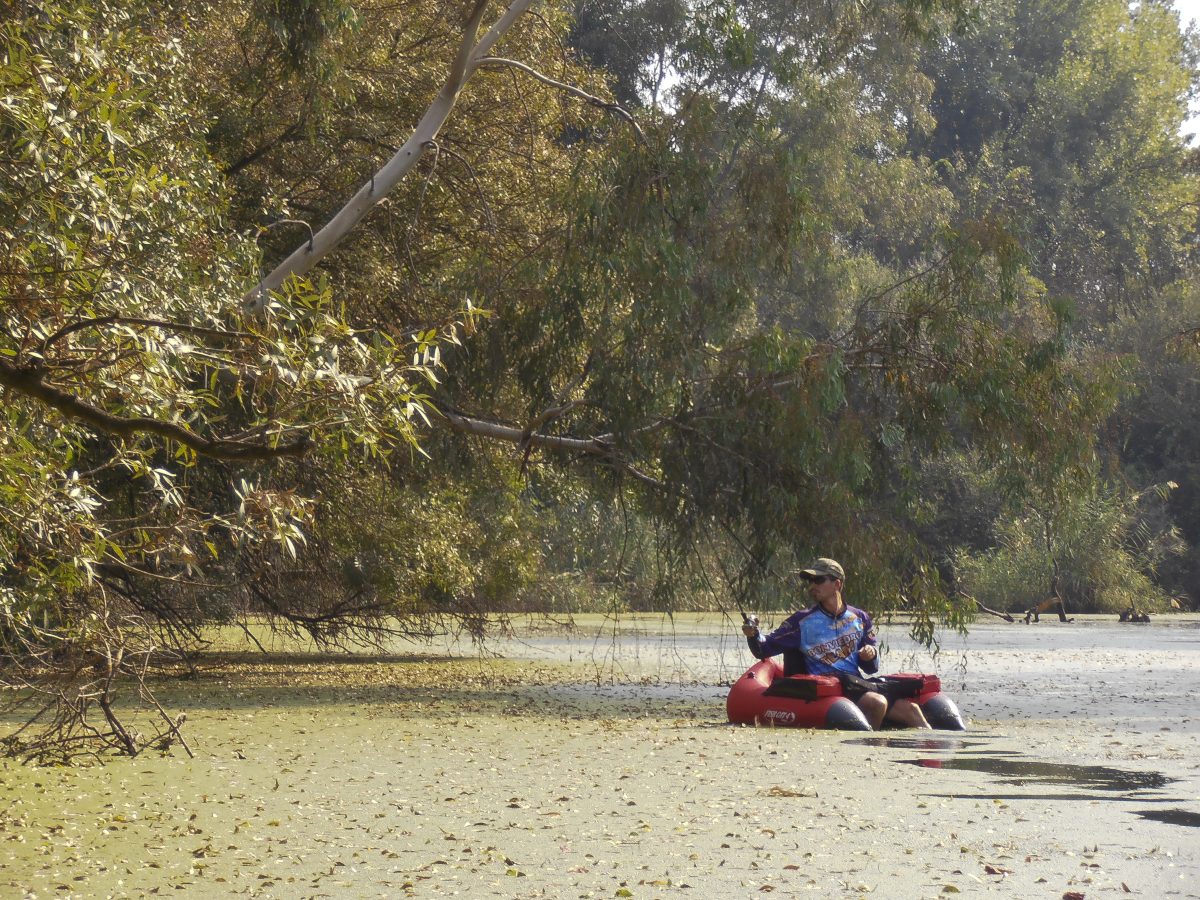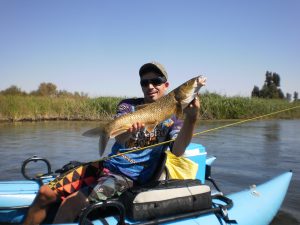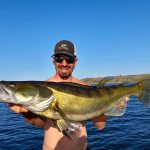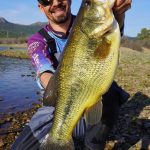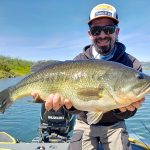Characteristics of Guadiana tables

In this post I’m going to refer to all the Guadiana tables (also called ponds). I’m also going to refer to those formed in its different tributaries in the province of Badajoz. The main tributaries that have interesting tables are: Zújar, Gargáligas, Ruecas, Guadámez, Matachel, Guerrero, Gévora and Zapatón. From the height of the walls of Orellana and Zújar lakes, up to the end of the Alqueva reservoir, there are hundreds of tables, some better, some worse but in all of them we will find a diversity of predators.
The Guadiana River, due to its flow regime and the abundant dams that regulate it, has numerous tables in which there is hardly any current. The scarce current present is usually found at the entrance and exit of these elongated pools.
A little over a decade ago, these scenarios were true paradises where we could obtain dozens of catches in a single day practically just by throwing a lure into the water.
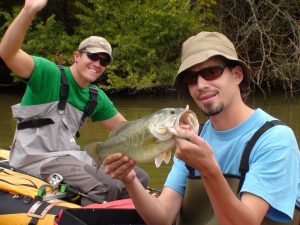
The overpressure of fishing (the arrival of google maps made them much more accessible), and the arrival of the water hyacinth and the Mexican waterlily are their main threats today. However if we know the river well and invest the necessary time we can still enjoy entertaining days, not only in terms of quantity but also in quality of the catches.
Bottom composition and structures
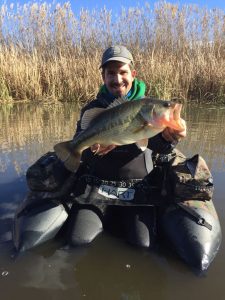
Because the area we are talking about is more than 100 kilometers long, the geological diversity that exists is important. However, as in all river ecosystems, we will find bottoms with gravel, sediments, etc.
In some areas, the least, we will find at the bottom the mother rock forming some structures, generally rounded by erosion. There are areas of granite, areas of slate, areas of schist… but in most of the tables at the bottom we will only find sand, silt and clay among which some gravel is splashed. Occasionally we will also find bridges, mills and other interesting anthropic structures, in addition to the constructed dams themselves.
Vegetation and cover
If there is one thing that makes these ecosystems stand out, it is the abundance of coverage. A large part of these rivers are home to eucalyptus, poplars, ashes and other typical riverbank trees. In a good number of cases these trees are “thrown” in the middle of the river due to various causes. These semi-submerged trees offer excellent cover for black bass, pike and barbel…
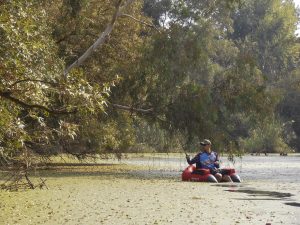
On the other hand, the riverside vegetation right on the shore also offers extraordinary coverage. The levels of these ponds are usually quite stable (except during the winter floods), so the trees, bushes, brambles etc. will offer shadows that are excellent bets.
Finally, I would like to highlight the tables in which rushes, reeds and cattails abound… but also the areas of water lilies and other aquatic plants. All this vegetation that is partially submerged also serves as a refuge for predators and allows them to both rest and hunt. These tables will also allow us to do a “heavy cover” fishing, very technical and entertaining and that we will not have the opportunity to practice in most of the reservoirs.
Main fishing species
These river ecosystems offer an interesting biodiversity of ichthyofauna, among which I will highlight the following predators.
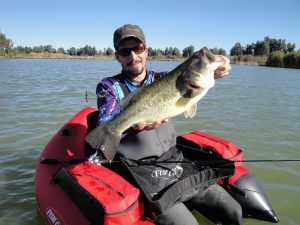
- Black Bass. You could say that black bass is “the king of the river”. All these rivers offer you an excellent ecosystem in which to complete all its biological stages in a favorable environment. The density is very high and the average size rather small, but in certain tables with enough food and depth we can find large specimens, some even above 3 kg.
- Pike. We can also find pike in practically all these ecosystems. However, their populations will proliferate more in those ponds with colder and oxygenated waters, in the larger ones and in those with more current.

Barbel of Guadiana river - Iberian barbel. The iberian barbel is the great native predator of these waters. Despite the fact that not all specimens show a predatory behaviour and that there are times of the year when they take the lures better than others, it is a species to be taken into account. Since bleak populations are stable in most of the river sections, a higher percentage of barbels have predatory habits. We can find very good specimens, being not uncommon the catches over 5 kg.
- Carp. The carp is very abundant in the river as the ecosystem it offers is also ideal for it. The carp of medium size are very abundant but in certain ponds we can capture big specimens, even exceeding 15 kg of weight.
Prey species of Guadiana tables
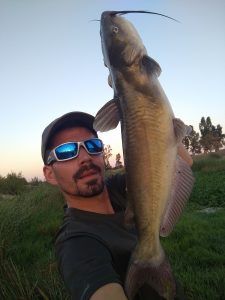
The bleak and the crawfish are the main prey of the predators that inhabit these waters. Both species are truly abundant, offering a virtually unlimited food source in most cases.
On some tables we also have an abundance of carp, barbel and carp fry, and more and more channel catfish. Channel catfish in some areas reach really big sizes and we can even catch them with lures. In some sub-basins we also find some native species that are logically threatened among such a biodiversity of predators. The cacho, the pardilla, the pejerrey, the colmilleja, the calandino or the fraile are some of them…
Access and navigation
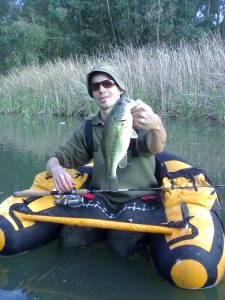
In the Guadiana River basin, the float tube is considered to be a complementary element to bathing. We can use both float tube and kayak or pontoon to navigate the different sections, all according to the current legislation. In most of the tables to have a floating vehicle is essential, since without it we will hardly be able to access most of the fishing areas. The vegetation on the banks usually forms an inaccessible tangle so we must locate the points where we can introduce our means of flotation in the water.
In some places we can fish from the shore, some gravel pits near the river or some ponds near the cities of Merida or Badajoz have better access. Nevertheless I recommend the use of the float tube in 95% of the cases since we will be able to have much better results.

